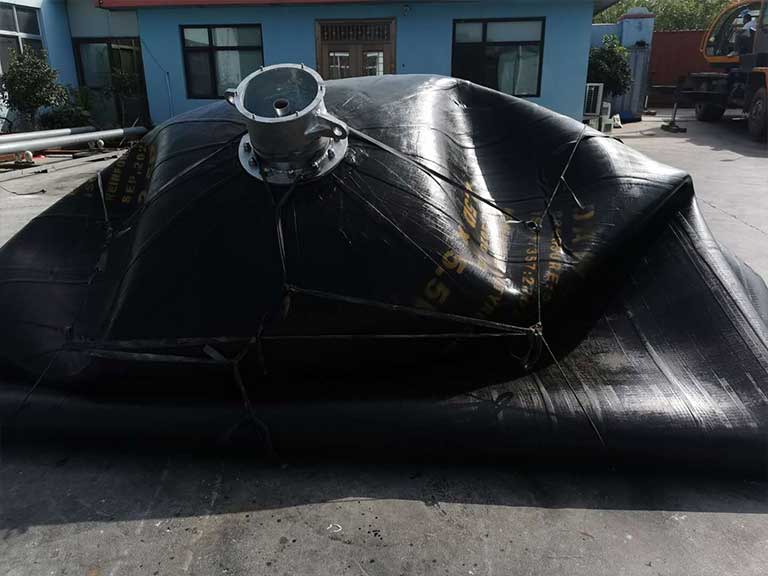Ever puzzled by why some rubber products develop a white or grayish film? This issue is common in marine gear, like fenders and airbags. It’s puzzling and concerning. It affects the look and possibly the function of our rubber products.
At Henger Shipping Supplies, a leading Chinese marine equipment supply, we’ve seen this problem. We focus on making high-quality Yokohama fenders and marine airbags. We aim to understand and solve this issue.
This article will delve into the reasons behind rubber whitening. We’ll look at chemical and environmental factors. We’ll also discuss how to prevent or lessen its impact on marine equipment.
Table of Contents
What is Rubber Whitening or Blooming?
Rubber whitening, or blooming, is a big worry in the marine world. Rubber whitening or blooming shows up as white or grayish powder, spots, or films on rubber surfaces. It can happen all over or in certain spots.
This affects how the product looks and works. Whitening often comes from internal compounds moving to the surface. This is influenced by the rubber’s chemical makeup, the environment, and how old the product is.
How Whitening Affects Marine Rubber Products
Marine rubber products, like Yokohama fenders and airbags, face tough marine environments. Whitening can make visual checks hard, hiding serious problems. At Henger Shipping Supplies, we’ve seen whitening increase surface friction. This might hurt performance during docking.
In addition, wet and dry cycles speed up whitening, making compounds move to the surface. This shows why we must understand and tackle whitening. It’s key to keeping our marine rubber products reliable and high-quality.
| Causes | Effects on Rubber Products | Impact on Marine Applications |
| Internal compound migration | Appearance of white or grayish powder | Difficulty in visual inspection |
| Environmental conditions (humidity, temperature) | Potential increase in surface friction | Reliability concerns among vessel operators |
| Chemical composition of rubber | Affects product performance | Potential performance issues during berthing operations |

The Science Behind Rubber Products Whitening
Understanding rubber whitening requires knowing the rubber’s chemical makeup and migration processes. We’ll look at the main factors causing this issue. This will give insights into the internal processes behind whitening.
Chemical Composition of Rubber Products
Rubber products contain various chemicals to improve their performance and durability. Additives like antioxidants, anti-aging agents, softeners, and fillers are used. The rubber’s chemical makeup is crucial in whitening susceptibility. If additives don’t mix well in the rubber, they can migrate to the surface, causing blooming.
| Additive Type | Function | Impact on Whitening |
| Antioxidants | Prevent oxidation | Can contribute to blooming if not properly dispersed |
| Anti-aging agents | Reduce degradation over time | May migrate to the surface, causing whitening |
| Softeners | Improve flexibility | Can exude to the surface, contributing to whitening |
The Migration Process of Additives
The migration process in rubber involves the movement of low-molecular-weight substances from within the rubber matrix to the surface over time. These substances seek thermodynamic equilibrium, moving from high concentration areas within the rubber to lower concentration areas at the surface. Factors that accelerate migration include the size of additive molecules, compatibility between additives and rubber, and the degree of cross-linking in vulcanized rubber.
- Temperature fluctuations intensify migration. Heat increases molecular mobility, while cold reduces the solubility of additives in rubber.
- Accumulation of these substances on the surface leads to crystallization or film formation, causing the white appearance of blooming.
Understanding the chemical composition and migration process of additives helps address rubber products’ whitening. This knowledge aids in developing strategies to mitigate its occurrence.

Common Types of Whitening in Rubber Products
Several common types of whitening affect rubber products, each with unique characteristics. Recognizing these types is essential for effective solutions.
- Sulfur Bloom: Sulfur bloom occurs when sulfur migrates to the rubber product’s surface. This is common in products with high sulfur levels. The resulting white or yellowish deposit affects the product’s appearance.
- Accelerator Exudation: Accelerator exudation happens when accelerators used in vulcanization migrate to the surface. These accelerators leave behind a residue, appearing as a white film or haze. This impacts the product’s appearance and performance.
- Additive Migration: Additive migration involves the movement of processing aids, antioxidants, and anti-aging compounds to the rubber surface. This whitening appears as a thin film or haze, varying based on the migrating additives. Antioxidants and anti-aging compounds, being of lower molecular weight, are particularly prone to migration.
Migration is gradual, becoming visible after the rubber product has been in service or storage for some time. In addition, Environmental conditions and rubber formulation influence migration rates. On the other hand, additives protect rubber from aging and environmental damage. However, their migration reduces the bulk material’s protection against degradation over time.
By understanding these whitening types, manufacturers can mitigate their effects. This improves the quality and appearance of rubber products.
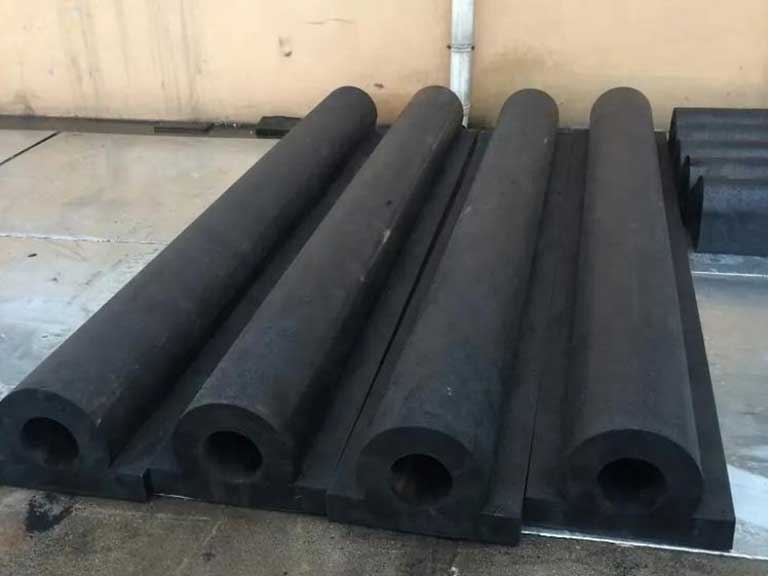
Primary Causes of Rubber Products Whitening
Rubber products whitening is a complex issue with multiple factors. Understanding these factors is key for manufacturers to produce high-quality products resistant to whitening.
Improper Formulation Design
Improper formulation design is a major cause of rubber products whitening. When the formulation is not correctly designed, additives can migrate to the surface, causing whitening. It’s crucial to ensure the formulation is carefully crafted to prevent such issues.
The chemical composition of rubber products is key in determining their susceptibility to whitening. Incompatible or excessive additives can cause unwanted migration and blooming.
Processing Technique Issues
Processing technique issues during rubber product manufacturing can also lead to whitening. Inadequate vulcanization, improper mixing, or incorrect curing temperatures can affect the final product’s quality, causing whitening.
To minimize whitening risk, we must adhere to proper processing techniques. This includes ensuring correct vulcanization and optimizing mixing and curing processes.
Raw Material Quality Fluctuations
Raw material quality fluctuations pose a significant challenge in rubber manufacturing. Inconsistencies in incoming materials can lead to unpredictable whitening issues, despite proper formulation and processing.
- The purity of chemical ingredients directly impacts their tendency to migrate within the rubber matrix and potentially bloom to the surface.
- In addition, the purity of the chemical composition directly affects its migration tendency in the rubber matrix. This may cause frosting on its surface.
- Synthetic rubber polymers may contain varying levels of residual catalysts or monomers that can contribute to whitening phenomena.
| Cause | Description | Impact on Whitening |
| Improper Formulation Design | Incompatible or excessive additives | Migration and blooming |
| Processing Technique Issues | Inadequate vulcanization or mixing | Affects final product quality |
| Raw Material Quality Fluctuations | Inconsistencies in incoming materials | Unpredictable whitening issues |
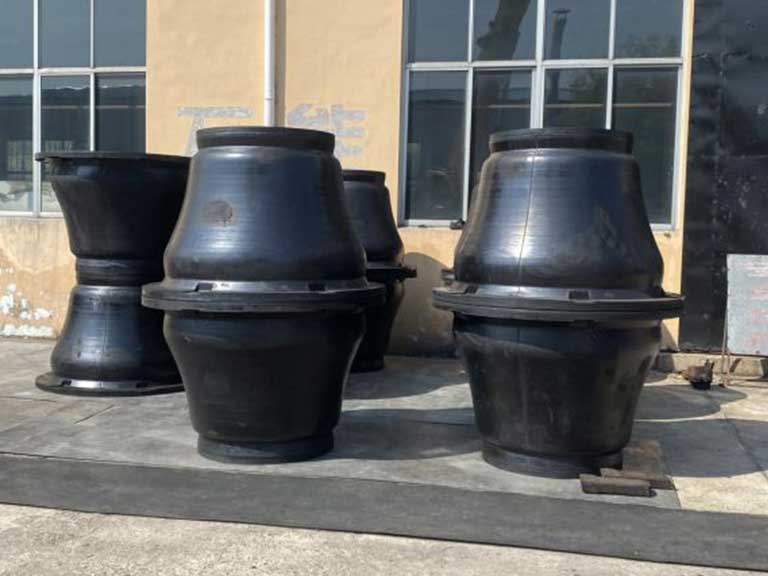
Environmental Factors Affecting Rubber Whitening
The whitening of rubber products is influenced by various environmental factors. As we delve into the causes of rubber whitening, it’s vital to consider how different environmental conditions contribute to this phenomenon. Aging and changes in rubber products are often linked to their exposure to different environmental elements.
Humidity Impact
High humidity levels can significantly affect the whitening of rubber products. Moisture can accelerate the migration of additives to the surface, leading to visible whitening. In humid environments, rubber products are more prone to surface changes due to moisture absorption, facilitating the movement of internal components to the surface.
Temperature Variations
Temperature fluctuations also play a crucial role in the whitening of rubber products. Extreme temperatures can cause the rubber to degrade, leading to changes in its appearance. Higher temperatures can increase the rate of chemical reactions within the rubber, potentially accelerating the whitening process.
Exposure to Chemicals and UV Light
Chemicals and UV light exposure significantly contribute to rubber whitening. UV radiation breaks chemical bonds in rubber, creating free radicals. These radicals start oxidation reactions. Oxygen in the air then reacts with the rubber, altering its chemistry.
Chemical exposures, especially to ozone or solvents, can extract plasticizers. This accelerates their migration to the surface. The combination of UV exposure and chemical contact leads to complex reactions. These reactions contribute to whitening.
Understanding these environmental factors helps us address rubber whitening. We can then develop strategies to mitigate its effects.
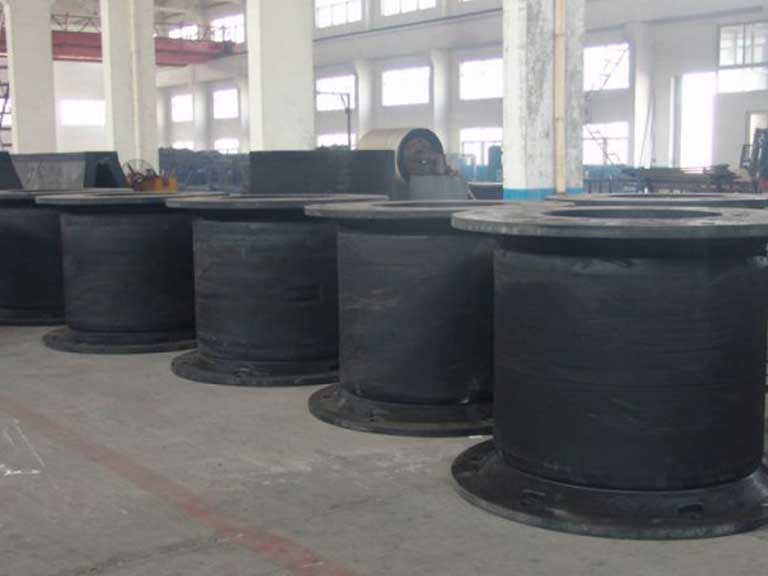
Marine-Specific Whitening Issues in Rubber Fenders
Marine rubber fenders face unique challenges due to harsh marine environments. Saltwater, UV radiation, and temperature changes accelerate rubber degradation.
- Saltwater Exposure Effects: Saltwater significantly contributes to marine rubber fender whitening. Seawater’s high salt content can push additives to the surface, causing a white residue.
- Unique Challenges for Yokohama Fenders: Yokohama fenders, with their complex design, encounter specific whitening issues. The interfaces between rubber layers can lead to additive migration, causing whitening. Their large size means more rubber compound, increasing additive migration risk.
At Henger Shipping Supplies, we combat this with specialized formulations. Our manufacturing process includes controlled cooling to reduce whitening risks. This maintains the essential performance for marine use.
How to Prevent Rubber Products from Whitening?
Preventing rubber whitening requires formulation optimization, proper vulcanization, and quality control. At Henger Shipping Supplies, we focus on maintaining quality and appearance. Especially for Yokohama and marine rubber fenders.
- Optimizing Rubber Formulations: Optimizing rubber formulations is key to preventing whitening. Selecting and balancing the chemical composition minimizes additive migration and blooming.
- Proper Vulcanization Techniques: Proper vulcanization is crucial for preventing whitening. Controlling vulcanization time and temperature ensures complete curing. Even mixing of components is also essential.
- Quality Control Measures: Quality control is vital in preventing whitening. We test and monitor throughout the manufacturing process. This includes raw material verification, in-process testing, and accelerated aging tests. Our system includes visual inspection protocols for early whitening detection.
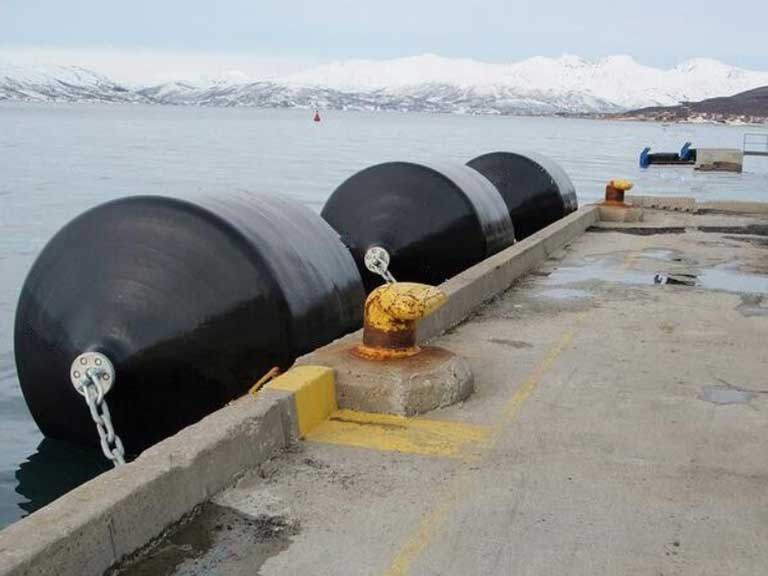
Effective Solutions for Whitened Rubber Products
Understanding whitening causes and applying solutions is essential. At Henger Shipping Supplies, we specialize in high-quality marine rubber products. These include Yokohama fenders and marine airbags.
Cleaning Methods for Marine Fenders
Cleaning is the first step in restoring whitened rubber products. For marine fenders, gentle cleaning methods are recommended to avoid damage.
Effective cleaning includes mild soap solutions and soft brushes for dirt removal. For stubborn whitening, specialized rubber cleaning products can be used.
Restoration Techniques
Restoration techniques go beyond simple cleaning. They address more persistent or recurrent blooming issues. These issues affect product appearance and functionality.
Effective restoration techniques include heat treatment methods, surface buffing or light abrasion, and chemical restoration. Heat treatment involves controlled warming. This increases the solubility of bloomed substances, allowing them to be reabsorbed into the rubber matrix.
Surface buffing or light abrasion can physically remove the affected layer. This exposes fresh material underneath. Chemical restoration involves applying specialized solvents or treatment compounds. These dissolve and redistribute the whitened substances.
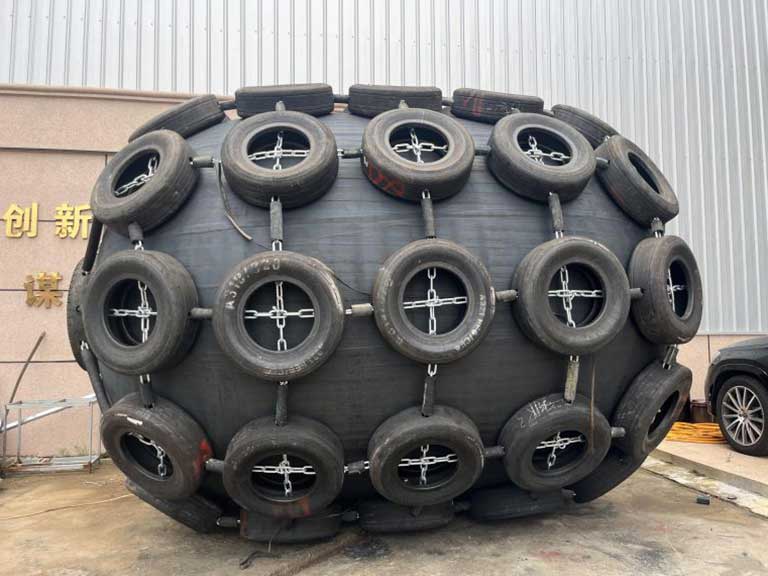
Conclusion
Rubber products whitening is a complex issue. It requires a thorough understanding of its causes and prevention methods. At Henger Shipping Supplies, we are dedicated to providing high-quality marine rubber products. We meet the needs of our customers while minimizing the occurrence of whitening.
The prevention of whitening in marine rubber products demands a systems approach. This approach addresses all potential contributing factors, from the selection of raw materials to manufacturing processes and appropriate maintenance methods. Although it is not always possible to completely eliminate bleaching, especially in harsh marine environments. However, appropriate formulations can significantly reduce its incidence and severity.
FAQ
What causes rubber fenders to turn white?
The whitening of rubber fenders is often due to the migration of additives to the surface. This process can be accelerated by exposure to high temperatures, humidity, and chemicals.
How does temperature affect the whitening of rubber?
High temperatures can accelerate the vulcanization process and the migration of additives. This leads to a higher likelihood of whitening. Temperature variations can also cause the rubber to expand and contract. This can result in surface cracks that contribute to whitening.
Can the quality of raw materials impact the likelihood of whitening?
Yes, the quality of raw materials used in the production of rubber fenders can significantly impact their susceptibility to whitening. Fluctuations in raw material quality can lead to variations in the chemical composition of the rubber. This makes it more prone to additive migration and whitening.
Are there any environmental factors that contribute to rubber whitening?
Exposure to saltwater, chemicals, and UV light can cause rubber fenders to whiten. Humidity and temperature changes also play a part in this process.
How can rubber fender whitening be prevented?
To prevent whitening, optimizing rubber formulations is key. Proper vulcanization techniques and quality control measures are also crucial. Advanced manufacturing and high-quality materials selection can further reduce whitening risks.
What are some effective solutions for restoring whitened rubber fenders?
Cleaning and restoration techniques can revive whitened rubber fenders. The best method depends on the whitening cause and the rubber type.
How do Henger Shipping Supplies’ rubber fenders resist whitening?
Henger Shipping Supplies employs advanced manufacturing and selects top-notch materials to fight whitening. By refining rubber formulations and vulcanization, we create fenders that resist whitening better.

